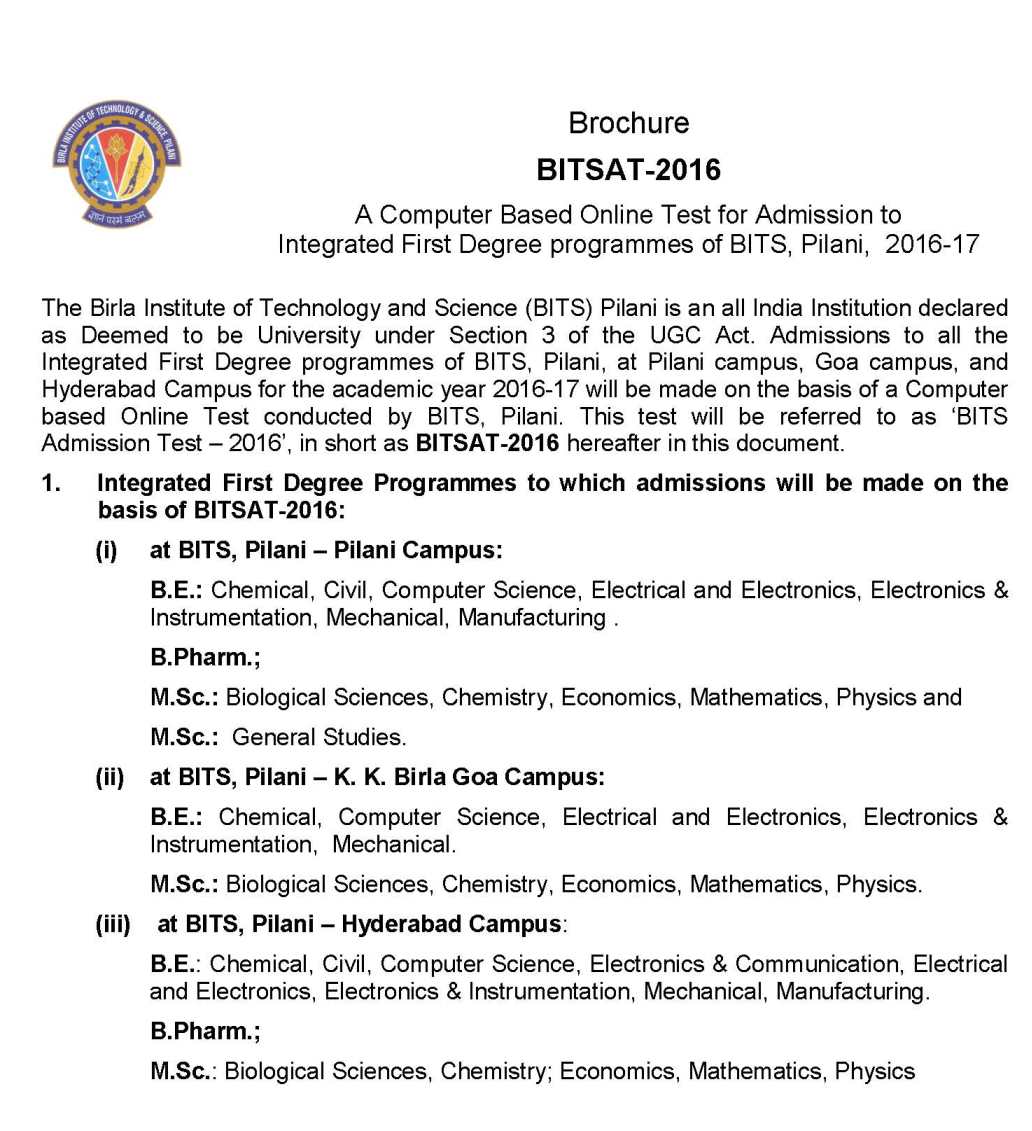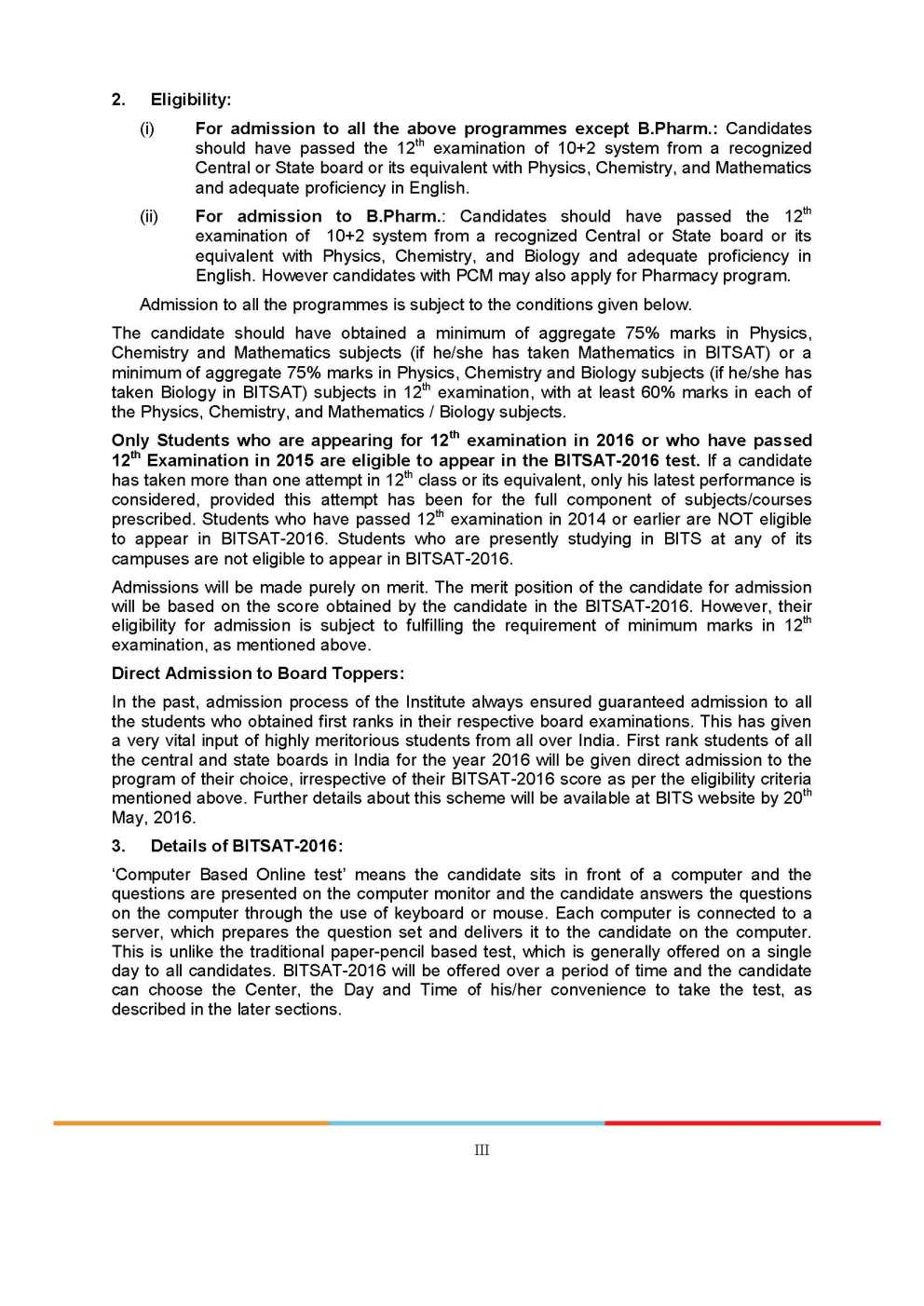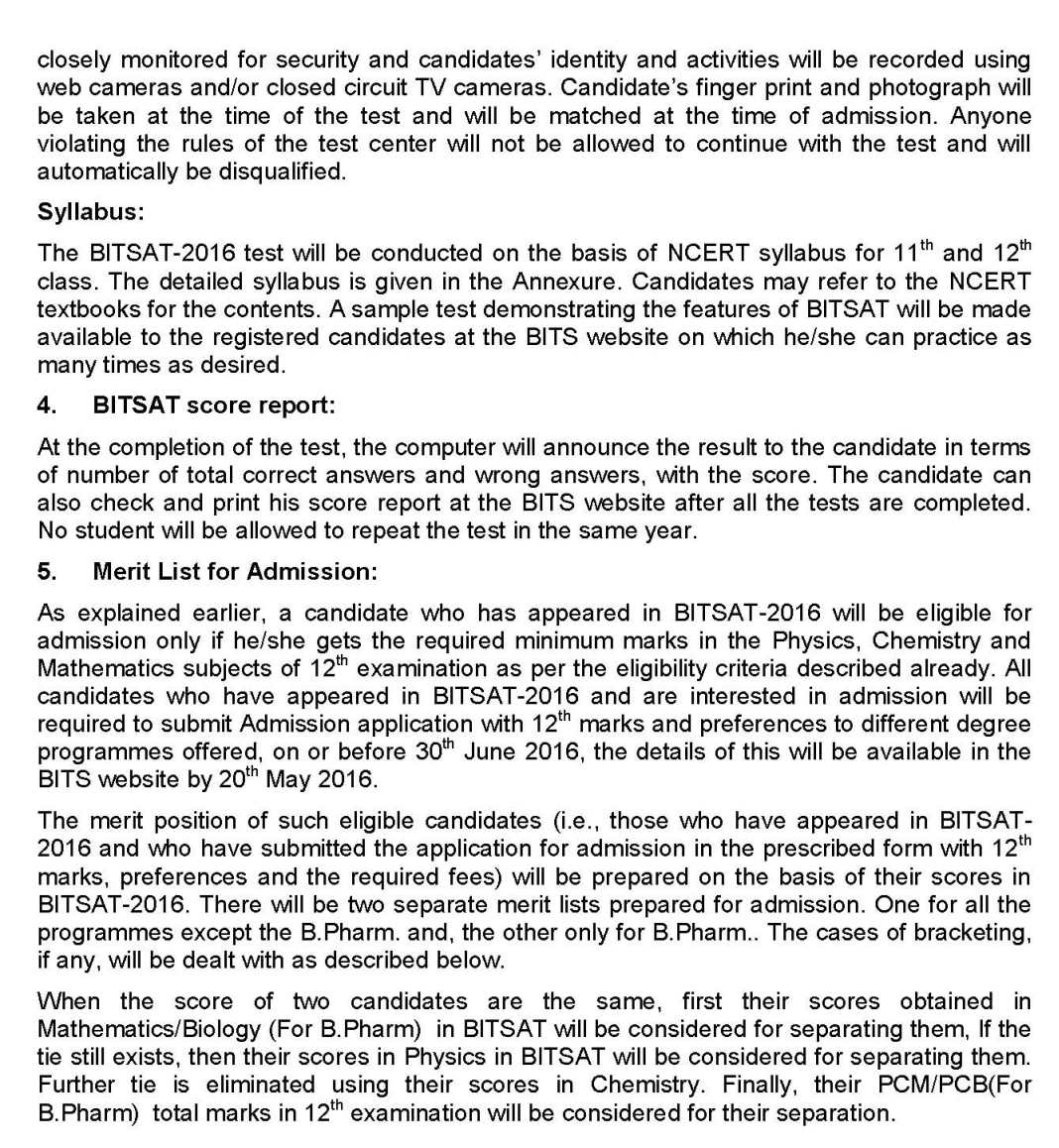|
#2
July 5th, 2016, 11:39 AM
| |||
| |||
| Re: BITSAT Chemistry Syllabus
As you have asked about the BITSAT Chemistry syllabus, I am giving you information about it, check below for the details Chemistry 1. States of Matter 1.1 Measurement: Physical quantities and SI units, Dimensional analysis, Precision, Significant figures. 1.2 Chemical reactions: Laws of chemical combination, Dalton’s atomic theory; Mole concept; Atomic, molecular and molar masses; Percentage composition empirical & molecular formula; Balanced chemical equations & stoichiometry 1.3 Three states of matter, intermolecular interactions, types of bonding, melting and boiling points Gaseous state: Gas Laws, ideal behavior, ideal gas equation, empirical derivation of gas equation, Avogadro number, Kinetic theory – Maxwell distribution of velocities, Average, root mean square and most probable velocities and relation to temperature, Diffusion; Deviation from ideal behaviour – Critical temperature, Liquefaction of gases, van der Waals equation. 1.4 Liquid state: Vapour pressure, surface tension, viscosity. 1.5 Solid state: Classification; Space lattices & crystal systems; Unit cell in two dimensional and three dimensional lattices, calculation of density of unit cell – Cubic & hexagonal systems; Close packing; Crystal structures: Simple AB and AB2 type ionic crystals, covalent crystals – diamond & graphite, metals. Voids, number of atoms per unit cell in a cubic unit cell, Imperfections- Point defects, non-stoichiometric crystals; Electrical, magnetic and dielectric properties; Amorphous solids – qualitative description. Band theory of metals, conductors, semiconductors and insulators, and n- and p- type semiconductors. 2. Atomic Structure 2.1 Introduction: Radioactivity, Subatomic particles; Atomic number, isotopes and isobars, Thompson’s model and its limitations, Rutherford’s picture of atom and its limitations; Hydrogen atom spectrum and Bohr model and its limitations. 2.2 Quantum mechanics: Wave-particle duality – de Broglie relation, Uncertainty principle; Hydrogen atom: Quantum numbers and wavefunctions, atomic orbitals and their shapes (s, p, and d), Spin quantum number. 2.3 Many electron atoms: Pauli exclusion principle; Aufbau principle and the electronic configuration of atoms, Hund’s rule. 2.4 Periodicity: Brief history of the development of periodic tables Periodic law and the modern periodic table; Types of elements: s, p, d, and f blocks; Periodic trends: ionization energy, atomic, and ionic radii, inter gas radii, electron affinity, electro negativity and valency. Nomenclature of elements with atomic number greater than 100. For more, you can refer to the attached file BITSAT Chemistry syllabus     |